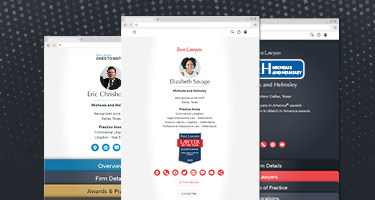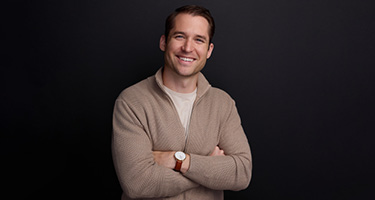A rose by any other name may still smell as sweet, but a motor vehicle incident that is not deemed to be an “accident” according to the Statutory Accident Benefits Schedule (SABS) will not qualify for compensation.
Recently HSH assisted a client who suffered injuries from falling against a metal door while alone in the back of a police van. Although the client sustained her injuries as a passenger in a motor vehicle during its normal operation, the SABS insurer denied her application for benefits by suggesting the operation or use of the vehicle was not the direct cause of her injuries. As such, the insurer contended her injuries were from an incident in a motor vehicle, not a motor vehicle “accident” as defined in section 3(1) of SABS.
After receiving written submissions, the Licence Appeal Tribunal (LAT) Adjudicator agreed with my client and found that the woman’s injuries were directly caused by the motor vehicle’s use and operation and not by any intervening event.
In this blog post, I explain how the adjudicator came to her decision about causation and why this case, while very fact-specific, is a rare win for injured people at the LAT.
The Events Leading up to the Injury
On September 21, 2021, Erin Gebe (the applicant) was a passenger in the rear of a Toronto police van. Seated on a metal bench facing a metal wall, she was handcuffed with her hands in front of her and was not wearing a seatbelt.
Reviewing a one-hour video of the incident provided by the Toronto Police Service, the adjudicator noted that Ms. Gebe appeared drowsy or possibly intoxicated. Throughout most of the recording, her head is down and her eyes are closed. Occasionally she rested her head against the side of her van or between her legs.
Fifty-five minutes after entering the van, it came to a stop. Ms. Gebe remained seated, waiting for the van doors to open. Over the next five minutes she appeared to fall asleep, gradually leaning to her right side. Eventually she fell from her seated position, striking her head against the metal door. She sat up immediately and requested medical assistance. Within a minute she was removed from the van.
Ms. Gebe sustained a cut above her right eyebrow, for which received stitches, and suffered a concussion.
Definition of an “Accident”: Purpose Test and Causation Test
Ms. Gebe’s application for motor vehicle accident benefits was denied by the SABS insurer, Northbridge General Insurance Company (the respondent). She appealed the decision at the LAT.
In the preliminary issue hearing, the LAT Adjudicator was required to determine if Ms. Gebe was involved in an “accident” according to the definition in section 3(1) of SABS. She cited the Ontario Court of Appeal’s decision in Economical Mutual Insurance Company v. Caughy, 2016 ONCA 226 as confirmation of the proper two-part legal test to determine whether a motor vehicle incident is an “accident.”
Two questions must be answered in the affirmative to conclude that an incident is an “accident”:
- First, for the purpose test, “Did the incident arise out of the use or operation of an automobile?”
- Second, for the causation test, “Did the use or operation of an automobile directly cause the impairment?”
In this case, both the applicant and the respondent agreed that this incident meets the standard of the purpose test. Ms. Gebe was a passenger in the van so the purpose test is satisfied. They disagreed about whether it met the standard for the causation test.
To decide on the question of causation, the LAT Adjudicator evaluated three considerations:
- The “but for” consideration (Would the applicant not have sustained injuries “but for” use of the motor vehicle?);
- The intervening act consideration (Did another event or act break the chain of causation?); and,
- The dominant feature consideration (If there were a number of possible causes, was the ordinary use or operation of the vehicle the dominant cause?)
Cause or Location of Injury?
Ms. Gebe contended that she was injured in a motor vehicle accident and that she would not have sustained her injuries but for her position as a passenger when she fell. The applicant therefore argued that the reasonable use or operation of the police van was the cause of her injuries.
Northbridge General Insurance Company disagreed and presented two alternatives. First, the respondent cited being in police custody and the decision to fall asleep without a safe place to rest as being intervening events. The respondent also suggested that passing out or falling asleep was the dominant factor of her injuries. As such, the respondent contended that the police van was not the direct or dominant cause of her injuries, but rather the location of the injuries.
Second, the respondent submitted, as an alternative, that Ms. Gebe’s injury was reasonably foreseeable in an unattended police van. Therefore, the breach of duty of care by the police was the direct cause of the applicant’s injuries and unrelated to the use or operation of the vehicle.
The Adjudicator’s Findings
In her decision, LAT Adjudicator Katie Grieves found that Ms. Gebe would not have sustained her injuries “but for” her use of the vehicle.
Ms. Grieves noted that she disagreed with the respondent’s suggestion that the applicant’s drowsiness or inebriation was an intervening event that broke the chain of causation. Noting that the decision was highly fact specific, she disagreed that this incident was comparable to other events the Tribunal considered “intervening,” such as slipping on ice outside of a parked car.
Citing Madore v. Intact Insurance Company, 2023 ONSC 11 as an instructive case, Ms. Grieves stated that an applicant need only prove that injuries directly flow from the use and operation of a vehicle and that a contributing cause does not break the chain of causation. In Madore, the applicant fell from the roof of his trailer while cleaning it.
Ms. Grieves wrote that falling over while being in custody in the police van does not change the fact that being a passenger and striking her face on the interior or the vehicle are the direct cause of her injuries. Even if there was a breach in the duty of care by the police, Ms. Grieves noted that it would only be a contributing factor to the accident, not the direct cause.
Taking on challenging cases
At Howie, Sacks & Henry LLP, we take the time needed to properly assess matters our potential clients bring to us during our no cost, no obligation initial consultations. If we believe we can help you access compensation for your injuries, we will gladly offer to become your trusted legal representative and tireless advocate.
A denial letter from an insurer may cause you to lose hope that you will be able to receive the benefits you deserve. But at HSH, Hope Starts Here.
Contact us today if you or a loved one has suffered a serious injury in an accident to learn how we may be able to help you.
















